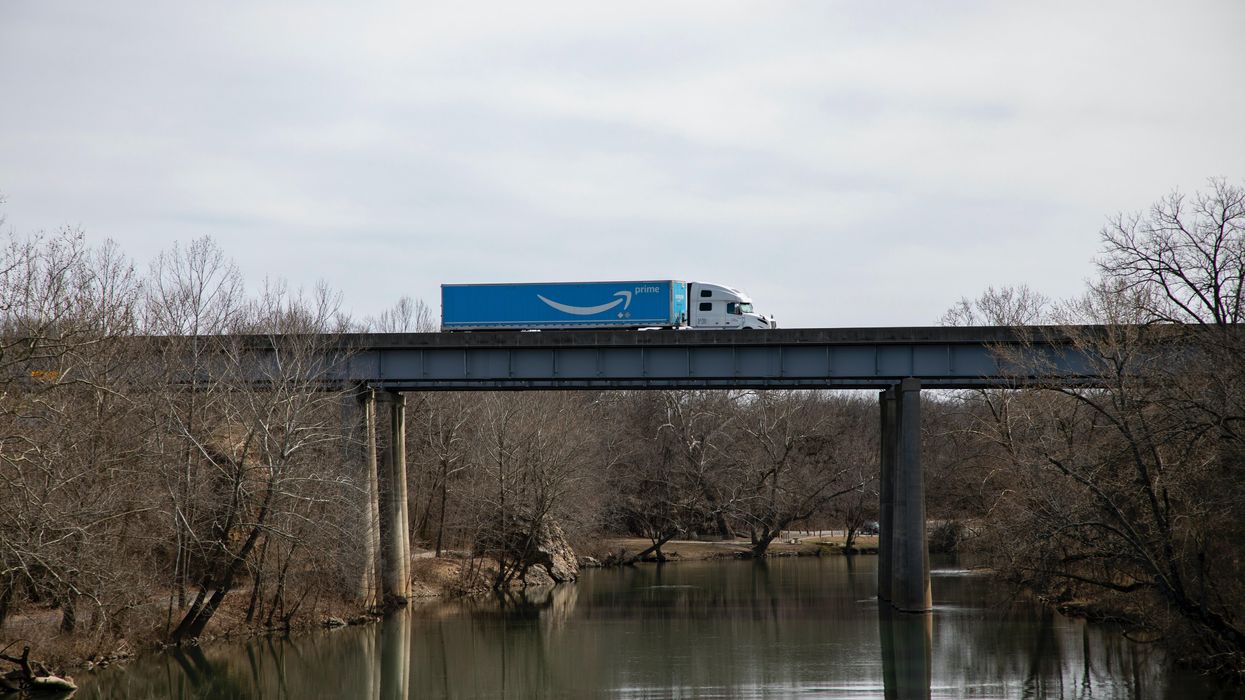There was a lot to learn about the recent progress of ecommerce this week, as many of the largest platforms in tech and commerce announced third quarter 2022 results over the last few days.
Here’s a look at the key numbers from Amazon and Shopify that show how they are faring, and a peek into the advertising and commerce-focused businesses of the social platforms where so many brands and retailers seek to acquire customers:
Amazon: +25%
That’s the year-over-year growth posted in Amazon’s advertising business, which brought in $9.5 billion in revenue. It comes at a time when other platforms such as Meta, YouTube and Snap have reported slowing growth or decline in advertising revenue. This is in part due to a difference in how these services are built. Since Amazon’s advertising is powered by first-party data, it functions as a walled garden that is not as affected by the changes from Apple’s App Tracking Transparency, which primarily impacted third-party data. However, those other platforms also noted a pullback in advertising due to the economy, which Amazon apparently isn’t seeing in the same way.
Other Amazon ecommerce highlights:
Online stores revenue grew 7%, bringing in $53.4 billion. That’s a swing back from a decline of 4% year-over-year in the second quarter. It helps that Prime Day was held in the third quarter of 2022, which lifted sales. But note the annual comparison is not apples-to-apples, as Prime Day 2021 was held in the second quarter.
Third-party sellers’ products represented 58% of total paid units sold in Q3, which was the highest percentage ever for Amazon. That was up from 56% in Q3 of last year. Revenue from third-party seller services grew 18%.
Costs remained a big focus, as they have been all year. Amazon has said it overbuilt in its logistics network, and is seeking to pull back. A period of "belt-tightening" has arrived across the company. Overall, Amazon aimed to realize $1.5 billion in cost savings on a quarter-over-quarter basis, but fell about a half-billion short of that in Q3. CFO Brian Olsavsky said it was difficult to make productivity gains in warehouses at a time when everyone was ramping up for Prime Day and Prime Early Access Sale. "My message is that we have work to do in 2023," he said.
The outlook for the holiday quarter: $140 billion to $148 billion in revenue. That was below analyst expectations, and led Amazon’s stock price to drop 13% after hours, Business Insider reported. It’s another warning sign for holiday spending, after Adobe predicted overall revenue growth for the peak shopping season of 2.5% across the economy. At Amazon, sales began to moderate later in the third quarter in the international business, where there is a tougher recessionary environment than North America, said Olsavsky.
When asked about the holidays, Olsavsky touted October’s Prime Early Access Sale, and said Amazon is “ready to go” with the rates of merchandise in-stock jumping up. But earlier in the call, he described the economic environment’s impact on the business this way: “The continuing impacts of broad-scale inflation, heightened fuel prices and rising energy costs have impacted our sales growth as consumers assess their purchasing power and organizations of all sizes evaluate their technology and advertising spend.”
Shopify: 2.14%
That’s the revenue of merchant solutions at Shopify as a percentage of its overall gross merchandise volume (GMV). According to company president Harley Finkelstein, the attach rate was the highest in Shopify’s history. Merchant solutions describes services that Shopify offers to run a business beyond core ecommerce store tools, such as Shopify Payments, financing through Shopify Capital, the cross-border commerce suite of tools Shopify Markets and recently acquired logistics software company Deliverr. It has been building these tools, with Markets just launching in the quarter and Deliverr still in the midst of being integrated into the Shopify Fulfillment Network.
More highlights for Shopify:
Revenue was up 22% over the same quarter in 2021 to $1.4 billion. GMV increased 11% year-over-year. to $46.2 billion. Gross profit dollars grew 9% to $662.3 million.
Offline GMV growth was up 35% year-over-year, as Shopify continues to see growth in its tools for brick-and-mortar stores. It launched the mobile hardware product POS Go in September to provide further capabilities.
Name brands: The company also touted brands that are newly using its platform, including the beauty brand Glossier and footwear brand Cole Haan. Celebrities including Ciara and Giada De Laurentiis also launched new consumer brands via Shopify.
Shop Promise was rolled out to all merchants. This is a badge that can be included with checkout that allows merchants to guarantee delivery. This arrives as Amazon is introducing Buy With Prime, a checkout button that embeds Prime’s delivery and guarantee on any webpage. Finkelstein was asked about whether Buy with Prime would be integrated on Shopify, but provided no update on any talks with Amazon.
SFN: Shopify is integrating the recently-acquired Deliverr into its Shopify Fulfillment Network (SFN).
“The combined scale of SFN and Deliverr allows us to consolidate volume, streamline operations and expand our carrier relationships. This unified network will enable Shopify to operate a small number of regional hubs that will serve several functions, including cross-docking, multichannel distribution, inventory balancing and some local fulfillment,” Finkelstein said.
The first combined hub is already up and running in Atlanta, and Finkelstein said the combination of the networks is expected to be complete in Q1 of 2021. Shopify is also building an “end-to-end logistics platform.” The idea is that, for merchants that choose to use it, SFN can work with Shop Promise. One guarantees delivery to help with a sale, while the other makes the two-day delivery happen.
Meta: -46%
That was the year-over-year decline in operating income at the parent company of Facebook, Instagram and WhatsApp. While a large portion of the post-earnings commentary and falling stock price is focused on the company’s massive bet on the metaverse for the future, it’s worth remembering that the Facebook and Instagram advertising that drove ecommerce is a big part of the company’s current business. Right now, that is facing challenges.
CFO Dave Wehner put it this way: "Consistent with our expectations, the headwind to year-over-year growth from Apple’s [App Tracking Transparency] changes diminished in Q3 as we lapped the first full quarter post the launch of iOS 14.5. However, this was offset by weak advertising demand, which we believe continues to be impacted by the uncertain and volatile macroeconomic landscape."
In other words, it took a hit from Apple's privacy-oriented moves, and now it is taking a blow from the economy.
There are signs of some growth in users. Daily usage was up 4% year-over-year across the company’s apps. The number of ad impressions increased 17% year-over-year, while the average price per ad decreased by 18% year-over-year.
Along with the metaverse, the company is also making a large investment in expanding AI infrastructure as it works to create a discovery engine that competes with TikTok, centered on its short-form video Reels product. AI and machine learning are also being employed as the company seeks to rebuild advertising technology for performance, targeting and measurement. Advantage+ Shopping campaigns were touted as one new tool on this front. But amid talk and debate about the metaverse, the direction and importance of the advertising business going forward is less clear.
YouTube: -2%
That’s the year-over-year decline in advertising revenue at YouTube in the quarter, which totaled $7.07 billion. According to CNBC, it was the first time YouTube’s ad revenue shrank year-over-year since Alphabet began breaking out YouTube’s results in 2019.
It came as overall revenue growth at parent company Alphabet, which also owns Google, is slowing. The revenue declined from 41% in Q3 2021 to 6% in 2022.
For both Google and YouTube, this comes at a time when the services have been integrating more shopping into their platforms. YouTube partnered with Shopify and rolled out live shopping tools, while Google has rolled out a slate of search features that bring shopping into the main results.
On YouTube, “There was a further pullback in spend by some advertisers across both brand and direct response,” said Philipp Schindler, SVP and Chief Business Officer at Alphabet. “But overall, I feel YouTube remains in a really good position to continue to benefit from the streaming boom. In direct response, we think there’s a lot of room to run to make YouTube more shoppable, more actionable from video action campaigns to product feeds, app campaigns, live commerce features.”
However, the company believes that search-focused advertising of Google has a different outlook.
“In challenging times like these, advertisers are carefully evaluating the effectiveness of their budgets,” Schindler said. “Search tends to do relatively well in such an environment, given its strong measurability and focus on delivering ROI. It’s also well suited to quickly adjust to changes in consumer behavior.”
Pinterest: +8%
That was the year-over-year revenue growth at the image-based discovery platform, which was $685 million.
Under new CEO Bill Ready, Pinterest is looking to make a push into shopping, and Ready shared more details about those efforts on the company’s earnings call. Half of the platforms’ users go to Pinterest to shop, he said. So the goal is to make shopping “core” to the Pinterest experience.
“Over time, we expect to make every product that the user encounters on Pinterest shoppable, even when that product may be in a scene or other user-generated content,” Ready said. “This means pins on all our surfaces should be shoppable, not just the ones on a designated Shop tab.”
It is expanding its product catalog through a new API, and working to integrate checkout or pathways to retailer sites through initiatives like a partnership with Shopify. But when it comes to the shopping experience that users will encounter, much of the work lies in harnessing the platform's combination of user-generated content and machine learning to make recommendations.
“On the discoverability side, we're leveraging both machine learning and the first-party signals we get from the unique human curation on Pinterest,” Ready said. “If you're looking for a mid-century modern couch, we should be able to show you tables, rugs and lamps to complete that room based on how millions of users have saved and organized home decor content. I think this is a superpower for us as we become the home for digital taste-based shopping.”












